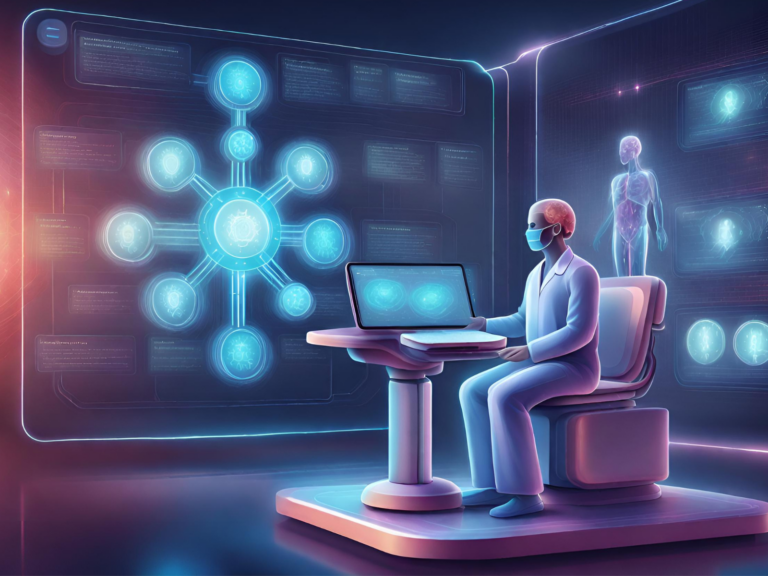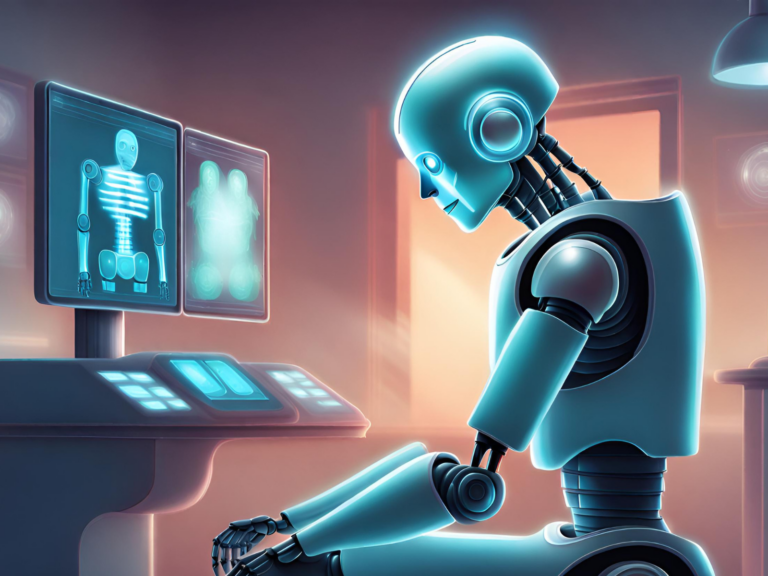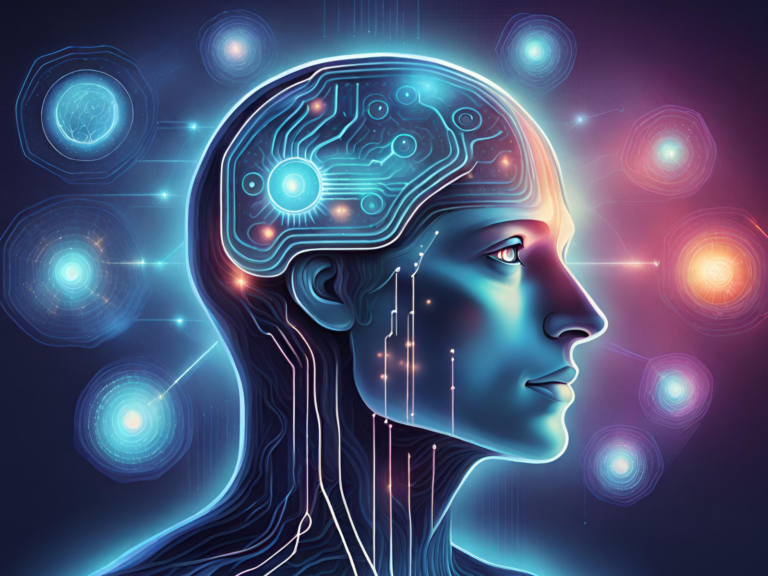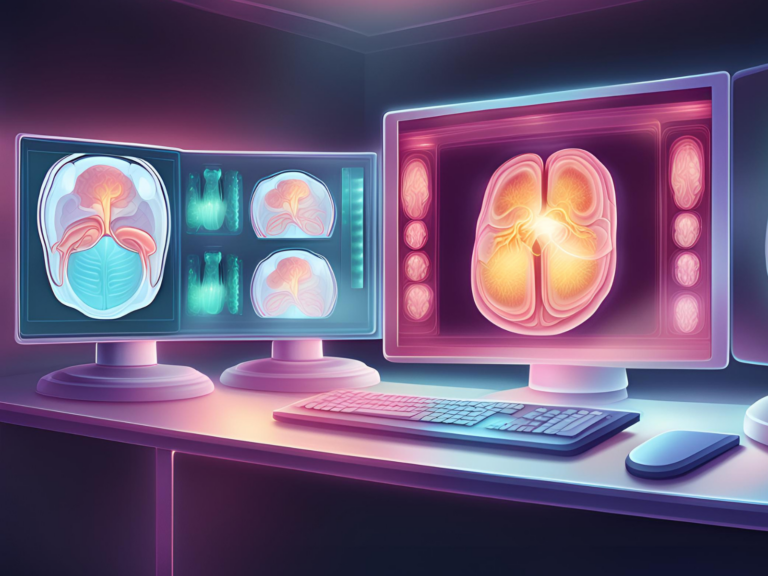AI and Computer Vision in Healthcare 101
AI and computer vision are rapidly advancing technologies that are having a significant impact on healthcare. AI can be used to analyze vast amounts of data, such as medical images and electronic health records, to assist with diagnoses and treatment planning. Computer vision is the ability of machines to interpret and understand visual information from the world, such as images and videos, which is critical in medical imaging and diagnosis. Together, these technologies have the potential to transform healthcare and improve patient outcomes.
Importance of AI and Computer Vision in Healthcare:
AI and computer vision are becoming increasingly important in healthcare as they are being used to improve diagnostic accuracy, assist in surgeries, and analyze medical images. They also have the potential to improve efficiency and reduce costs in healthcare. These technologies are helping to improve the quality of care and increase access to healthcare for patients, especially in remote and underserved areas.
Applications of AI and Computer Vision in Healthcare
AI and computer vision are being used in healthcare to improve diagnostic accuracy, assist in medical imaging, aid in drug development and personalized medicine, and support remote monitoring and telemedicine. These technologies have the potential to improve the quality of care and increase access to healthcare for patients, especially in remote and underserved areas.
Diagnostics and Imaging
AI and computer vision are being used to improve diagnostic accuracy and assist in medical imaging. For example, deep learning algorithms can be used to analyze medical images such as X-rays, CT scans, and MRIs to identify abnormalities and diseases such as tumors and assist in the diagnosis of conditions like osteoarthritis and Alzheimer’s disease. Additionally, AI can be used to analyze pathology images to assist pathologists in identifying cancerous cells.
Drug Development and Personalized Medicine
AI and computer vision are also being used in drug development and personalized medicine. For example, AI can be used to analyze large amounts of genetic data to identify potential drug targets and predict how patients will respond to different treatments. Additionally, computer vision can be used to analyze images of cells to identify potential drug targets.
Remote Monitoring and Telemedicine
AI and computer vision are also being used in remote monitoring and telemedicine. For example, AI-powered remote monitoring devices can be used to collect vital signs and other patient data, which can then be analyzed by healthcare providers to identify potential health issues. Additionally, computer vision can be used in telemedicine to analyze medical images and assist with diagnosis and treatment planning.
Benefits of Ising AI and Computer Vision in Healthcare
The benefits of using AI and computer vision in healthcare are many, including improved diagnostic accuracy, increased efficiency and cost savings, personalized medicine, and improved patient outcomes. These technologies have the potential to transform healthcare and improve patient outcomes.
Improved Diagnostic Accuracy
One of the biggest benefits of using AI and computer vision in healthcare is improved diagnostic accuracy. For example, AI can be used to analyze medical images and assist with diagnoses, leading to more accurate and timely treatment. Additionally, AI can be used to analyze large amounts of genetic data to predict how patients will respond to different treatments, resulting in more personalized and effective treatment plans.
Increased Efficiency and Cost Savings
Another benefit of using AI and computer vision in healthcare is increased efficiency and cost savings. For example, using AI and computer vision to automate tasks such as data entry and image classification can free up healthcare providers to focus on more complex and value-adding tasks. Additionally, using AI and computer vision to analyze large amounts of patient data can lead to cost savings and improved scalability.
Personalized Medicine and Improved Patient Outcomes
Personalized medicine, which is the tailoring of medical treatment to the individual patient, is a key benefit of using AI and computer vision in healthcare. AI can be used to analyze large amounts of data, such as medical images and electronic health records, to identify patterns and predict how patients will respond to different treatments. This can lead to more effective treatment plans and improved patient outcomes.
Real-World Cases and Examples
AI and computer vision are being used in healthcare to improve diagnostic accuracy, assist in medical imaging, aid in drug development and personalized medicine, and support remote monitoring and telemedicine. These real-world cases and examples demonstrate the potential of these technologies to improve the quality of care and increase access to healthcare for patients, especially in remote and underserved areas.
Radiology and Pathology
One of the most well-known applications of AI and computer vision in healthcare is in the field of radiology and pathology. Deep learning algorithms are being used to analyze medical images such as X-rays, CT scans, and MRIs to identify abnormalities and diseases such as tumors and assist in the diagnosis of conditions like osteoarthritis and Alzheimer’s disease. Additionally, AI is being used to analyze pathology images to assist pathologists in identifying cancerous cells.
Oncology and Precision Medicine
AI and computer vision are also being used in oncology and precision medicine to analyze large amounts of data, such as medical images, genetic data, and electronic health records, to identify patterns and predict how patients will respond to different treatments. This can lead to more effective treatment plans and improved patient outcomes.
Remote Monitoring and Telemedicine
AI and computer vision are also being used in remote monitoring and telemedicine to collect patient data, such as vital signs, and analyze it to identify potential health issues. Additionally, computer vision is used in telemedicine to analyze medical images and assist with diagnosis and treatment planning.
Challenges and Considerations
While AI and computer vision have the potential to transform healthcare and improve patient outcomes, there are also challenges and considerations that need to be taken into account. These include ethical concerns and potential biases, data privacy and security, and implementation and integration with existing systems. It’s important to address these challenges and considerations when designing and implementing AI and computer vision systems in healthcare.
Ethical Concerns and Potential Biases
One of the biggest challenges with AI and computer vision in healthcare is the potential for ethical concerns and biases. For example, AI systems that are trained on biased data can perpetuate and even amplify existing biases in society, leading to potential issues with fairness and equity. Additionally, AI systems used in healthcare may raise concerns about patient autonomy and informed consent. It’s important to consider these ethical concerns and biases when designing and implementing AI and computer vision systems in healthcare.
Data Privacy and Security
Another challenge with AI and computer vision in healthcare is the need to protect data privacy and security. As AI and computer vision systems collect and analyze large amounts of sensitive patient data, there is a risk that this data could be accessed, stolen, or misused. It’s important to implement strong data security measures and adhere to relevant data privacy laws and regulations when working with AI and computer vision systems in healthcare.
Implementation and Integration with Existing Systems
Another challenge with AI and computer vision in healthcare is the implementation and integration with existing systems. It can be difficult to implement new AI and computer vision systems and integrate them with existing healthcare systems and processes. It’s important to plan and consider the implementation and integration process when working with AI and computer vision systems in healthcare.
Conclusion
We have discussed the importance of AI and computer vision in healthcare. We have explored some of the key applications and benefits of these technologies, including improved diagnostic accuracy, increased efficiency and cost savings, personalized medicine, and improved patient outcomes. We have also discussed some of the challenges and considerations that need to be taken into account when implementing AI and computer vision systems in healthcare. Additionally, we have provided real-world examples and cases in healthcare to demonstrate the potential of these technologies.
As AI and computer vision continue to advance, it’s important for healthcare organizations to explore and invest in these technologies. By doing so, they can reap the benefits of improved diagnostic accuracy, increased efficiency and cost savings, personalized medicine, and improved patient outcomes. Additionally, by addressing the challenges and considerations, they can ensure that their use of AI and computer vision aligns with ethical and legal standards.
In conclusion, AI and computer vision are rapidly advancing technologies that have the power to transform healthcare and improve patient outcomes. Healthcare organizations should consider the potential benefits and challenges and take the next steps to explore and invest in these technologies. As these technologies continue to evolve, it will be important to stay informed and up-to-date on the latest developments and best practices in AI and computer vision in healthcare.







